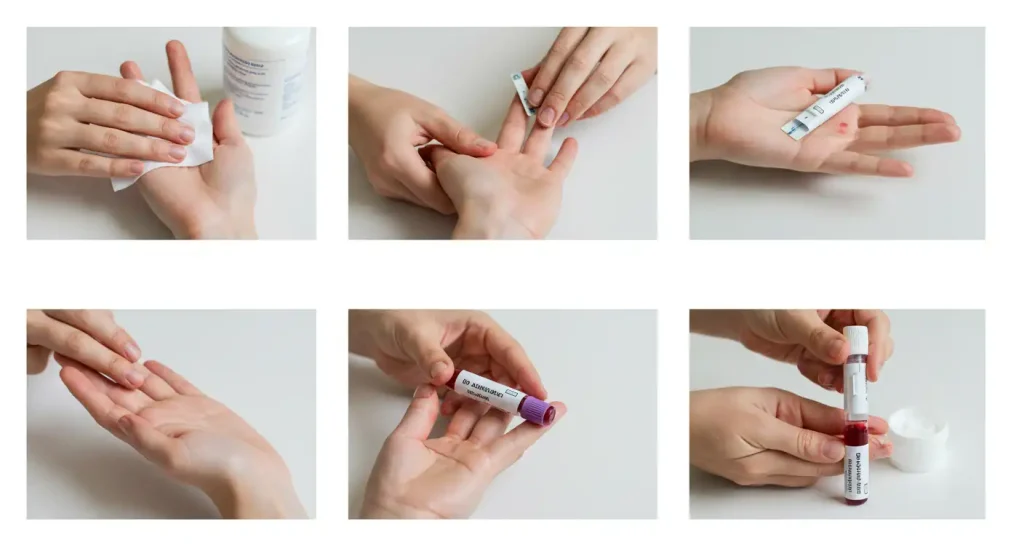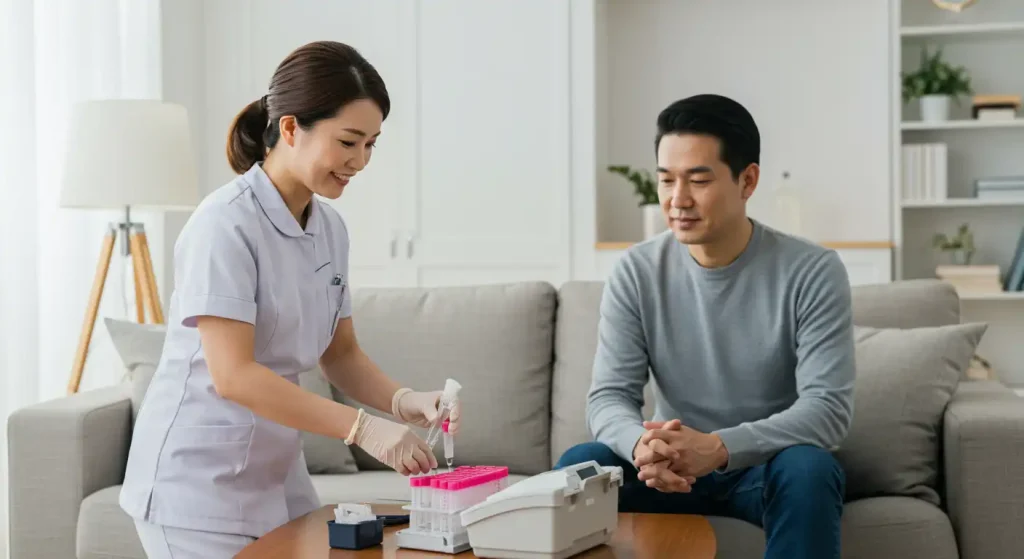At-home blood tests are an incredibly convenient way to monitor your health, but accuracy is crucial for obtaining reliable results. Collecting blood samples at home may seem straightforward, but even the smallest mistake can compromise the results, making it essential to follow the correct procedures. In this article, we’ll walk you through how to collect blood samples for home lab tests with confidence, minimizing errors and ensuring that your results are as accurate as possible. For those looking to get lab tests done at home with professional support, Vitals Health Care offers a range of at-home medical services, including lab tests, ensuring accuracy and convenience.
1. Why Accuracy Matters in Home Blood Tests
Blood tests are often the first step in diagnosing health conditions or monitoring existing ones. When performing a blood test at home, the quality of the sample you collect directly impacts the accuracy of the results. Even minor errors—like contamination, insufficient sample size, or improper storage—can lead to inaccurate readings, potentially delaying diagnosis or treatment.
Why it’s Crucial:
- Inaccurate readings can lead to false diagnoses.
- Improper sample collection can affect your treatment plan.
- Test results need to be reliable for medical decisions.
2. Preparing for the Blood Collection Procedure
Before you begin collecting your blood sample, it’s important to prepare yourself and your environment. A little preparation goes a long way in ensuring the process is smooth.
Essential Supplies:
- Blood collection kit (typically provided by the lab)
- Clean hands (soap and water or hand sanitizer)
- Alcohol swabs (for sanitizing the skin)
- Bandages or gauze (for aftercare)
- Cotton ball or gauze pad (to stop bleeding)
- Disinfectant (optional, for extra cleaning)
Set Up the Environment:
- Choose a clean, well-lit area.
- Wash your hands thoroughly to avoid contamination.
- Prepare all materials and have them within reach.
3. Step-by-Step Guide to Collecting Blood Samples at Home
Collecting blood samples at home may involve either a fingerstick (capillary blood collection) or venipuncture (drawing blood from a vein). The following guide focuses on fingerstick collection, which is more common for at-home tests.
Step 1: Wash Your Hands
Before starting, thoroughly wash your hands with soap and warm water. If soap and water are unavailable, use hand sanitizer to clean your hands.
Step 2: Prepare the Collection Site
- Choose a finger: The middle or ring finger is often recommended, as they tend to have the best blood flow.
- Clean the area: Use an alcohol swab to clean the fingertip. Let it dry to prevent contamination.
Step 3: Prick Your Finger
- Use the lancet: Gently press the lancet against your fingertip and trigger it. This will create a small puncture.
- Avoid squeezing the finger: Allow the blood to flow naturally from the wound. Squeezing can cause tissue fluid to mix with the blood, potentially compromising the sample.
Step 4: Collect the Blood Sample
- Collect the blood: Follow the instructions on your test kit to ensure the right amount of blood is collected. You may need to touch the tip of the blood collection tube or strip to the blood drop.
- Do not overfill: Filling the collection tube beyond the recommended level can result in inaccurate readings.
Step 5: Stop the Bleeding
After collecting the blood, use a clean cotton ball or gauze to apply gentle pressure to the puncture site to stop the bleeding. If necessary, use a bandage to keep the area clean

4. Common Errors to Avoid During Blood Collection
Even with the best intentions, errors can happen. Here are some of the most common mistakes to watch out for:
1. Using the Wrong Finger
- The thumb can sometimes be less effective for blood flow. Always try to use the middle or ring finger for the best sample.
2. Inadequate Cleaning
- Failing to properly clean the area before pricking can introduce bacteria into the sample, leading to contamination and inaccurate results.
3. Squeezing the Finger
- Squeezing your finger after pricking can force tissue fluid into the sample, which can affect test results.
4. Not Following Instructions
- Skipping steps or using the collection kit incorrectly can lead to poor-quality samples.
5. Best Practices for Ensuring Accurate Results
1. Stay Calm
Try not to rush. Stay calm and collected during the collection process to avoid mistakes due to anxiety or haste.
2. Use a Timer
Some tests require the blood to be collected within a specific time frame. Use a timer to keep track of your collection process and ensure that you don’t wait too long or take too long to collect the sample.
3. Keep the Sample Safe
Once collected, ensure that the blood sample is stored according to the instructions. Improper storage can affect the quality of the sample and lead to unreliable results.
4. Check for Proper Sealing
If your kit requires you to seal the sample container, double-check that it is properly closed. A leak can contaminate the sample.
Final Thoughts
Collecting a blood sample for home lab tests doesn’t have to be intimidating. By preparing correctly, following the instructions carefully, and avoiding common errors, you can ensure accurate results. If you’re unsure, reach out to the test provider for assistance. For professional at-home lab test services, visit Vitals Health Care. They provide convenient blood sample collection across Dubai.
7. FAQs
Q1: How can I reduce the pain when collecting blood at home?
- To minimize pain, ensure the lancet is sharp, and always prick the side of your fingertip rather than the pad. Avoid squeezing the finger after pricking.
Q2: Can I use alcohol wipes for cleaning the finger?
- Yes, but make sure the alcohol dries completely before pricking the skin to avoid contamination or discomfort.
Q3: What should I do if I accidentally spill or overfill the blood sample container?
- If you’ve overfilled or spilled the container, it’s best to discard the sample and start again to avoid inaccurate results.
Q4: How long can I store my blood sample before sending it to the lab?
- Blood samples for home tests should generally be sent within a few hours to ensure accurate results. Check the instructions in your kit for specific guidelines.
Q5: What if the blood sample is too small?
- Some tests require a minimum amount of blood. If the sample is too small, you may need to collect more blood or repeat the process as per the test provider’s instructions.

